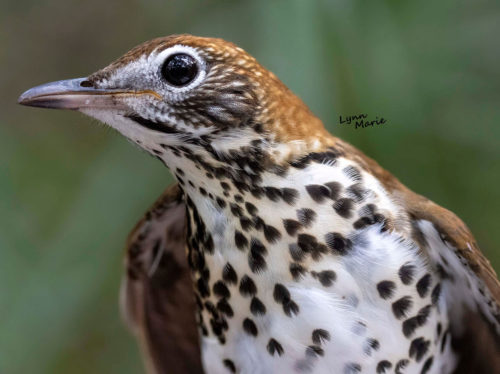Florida is one of the Wood Thrush’s (Hylocichla mustelina) migration routes; they breed in deciduous and mixed forests in eastern North America. During winter, they will live in shady, broad-leaved, and palm tropical forests.
Wood thrushes mainly eat invertebrates on leaf litter and fruits from shrubs. Their summer diet is primarily invertebrates, though they will occasionally eat salamanders found in trees. Their diet will shift to mainly fruits, particularly fatty fruits, to prepare for migration. In winter, they are omnivorous, eating a variety of fruits and invertebrates. The male Wood Thrush is one of the first songbirds to be heard in the morning and among the last in the evening.
Wood Thrushes are solitary foragers, though they may form mixed flocks on their wintering grounds. They are still common though their population has declined between 1966 and 2019, according to the North American Breeding Bird Survey. The Wood Thrush is included in the Yellow Watch List for birds most at risk of extinction without significant conservation actions to reverse declines and reduce threats. It is thought that habitat fragmentation in their breeding and wintering grounds contributed to their population decline. Lower food quality choices can result from fragmented habitats along with exposed nests for predators such as raccoons, jays, crows, and domestic or feral cats, and to the nest parasite, the Brown-headed Cowbird (Molothrus ater).
Fun Fact: Among many alarms calls this bird can make, one is a distinctive, sharp machine-gun-like sound that can be heard from far off.

